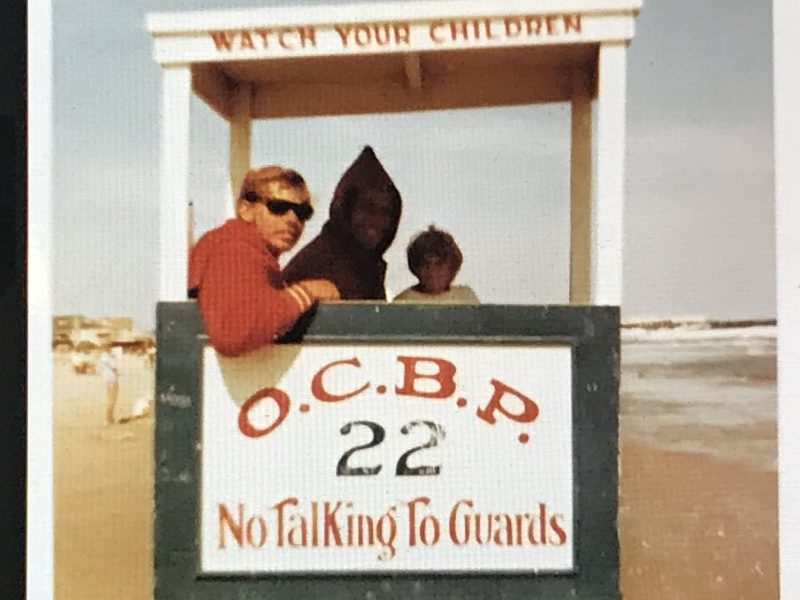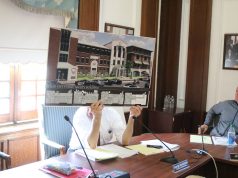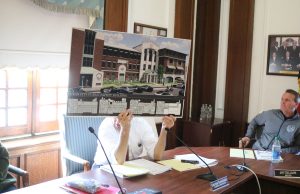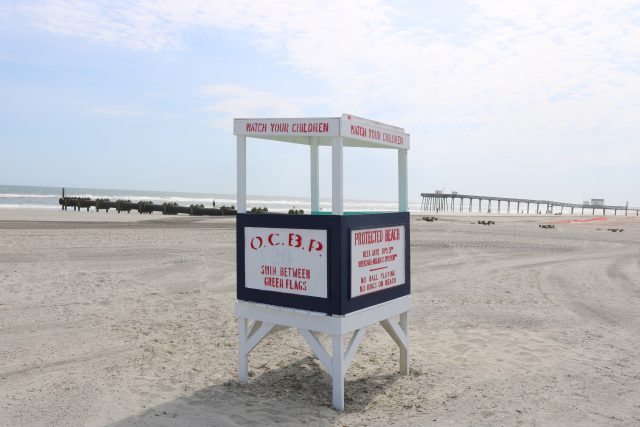
By Tim Kelly
Consider, if you will, the Ocean City Beach Patrol’s lifeguard stand. Never has such a well-known O.C. symbol been so little understood.
The white wooden stands with the distinctive blue trim and red lettering are unique to South Jersey’s beach communities, and functionally more useful to the professional men and women who patrol the resort’s 40 guarded beaches.
More than that, they are some of the most photographed and romanticized symbols of Ocean City.
By day, people snap photos of the stands, which are numbered or named with the corresponding street designation, often with an OCBP boat visible in the background.
After the guards move the stands beyond high tide’s reach and leave their posts in late afternoon, kids play on them and sometimes get into routine mischief. Couples snuggle in them. At daybreak, people sit in them to watch the sunrise.
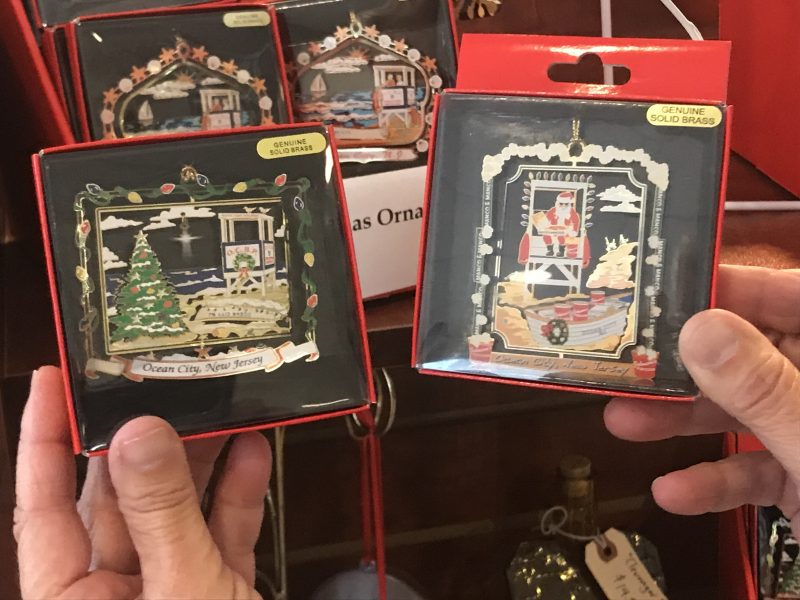
Search the internet and you won’t find much documented history about the lifeguard stands, despite being an O.C. tradition for 99 summers now.
What you will find are items for sale, including replicas of all sizes, tree ornaments, refrigerator magnets, beach towels, coffee mugs, post cards, art prints, calendars and all other manner of OCBP lifeguard stand kitsch.
We’re told that tiny wooden depictions of the stands even dangle from women’s earrings, although that one hasn’t yet been confirmed.
So what’s the big deal about some wooden lifeguard stands?
“Jack Jernee, Beach Patrol captain from 1920 to 1942, designed them,” local historian Fred Miller said. “Here was a man who was clearly ahead of his time.”
Jernee was a World War I (Coast Guard) and World War II (Navy) veteran who changed the name of the former Ocean City Lifeguards to the Beach Patrol. Wanting his guards to have all the best equipment, he was responsible for many other innovations still in use today.
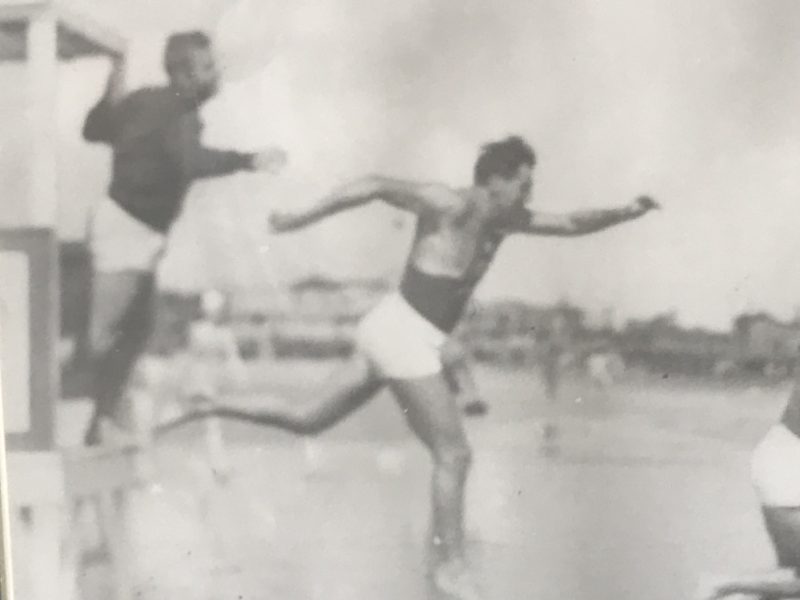
Jernee thought outside the box of the open lifeguard chair with attached umbrella, which remains the standard guard station in most area beach communities. Instead, he created his own box of sorts, a wooden design about 10 feet high and four feet wide. He attached a “roof” to the structure, which gave the stands several advantages over the old chair design.
The roof tilts down at a slight angle to the back side to facilitate water drainage. For a time there was a rail along the back side to prevent beach chairs from sliding off. When a few falls resulted anyway, guards were told no more beach chairs up top.
“The roof was really all about sun protection. At that time, people didn’t think much about sun protection, but (Jernee) did,” said Miller, an OCBP alum, longtime lieutenant, Beach Patrol historian and author. “He encouraged the guards to use suntan lotion (sunscreens and SPF ratings were still a half century in the future) and to protect themselves from the sun as much as possible.”
“Very little was known about the dangers of long-term exposure to the sun, but Jack seemed to have a sense of it,” Miller added.
The roof also enabled the guards to stand atop their perch for a better view of their surroundings.
“Put that stand at the water’s edge and stand up on that roof and you can really see a lot, especially on a crowded beach day,” Miller said.
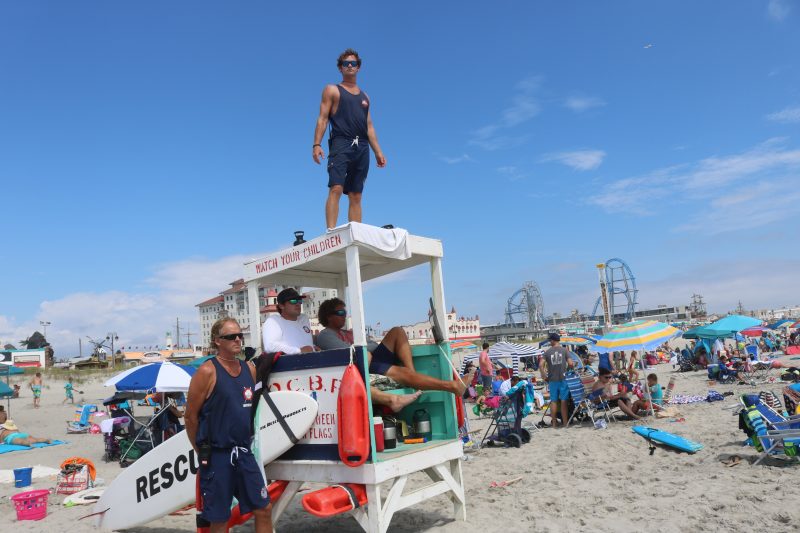
Jernee is credited with designing the distinctive color scheme of the stands, as well as the OCBP’s uniforms.
“He was one of the most patriotic people in town, at a very patriotic time in this country,” Miller said. “That’s why he painted the stands red, white and blue, and why he dressed the guards in those colors.”
In case there was any doubt of his reverence for Old Glory, Jernee also began the traditional Boardwalk flag-raising ceremonies, still held daily in-season since 1940.
The guard stands have remained largely unchanged in construction or design since they first appeared on O.C. beaches. The side walls of the stands were much higher in the first few years, and then cut down to improve visibility.
“Since the 1930s, the stands are virtually unchanged,” Miller noted. “The Beach Patrol has been bound more than many other institutions to tradition. Having said that, they’re traditions because they’ve served us so well.”
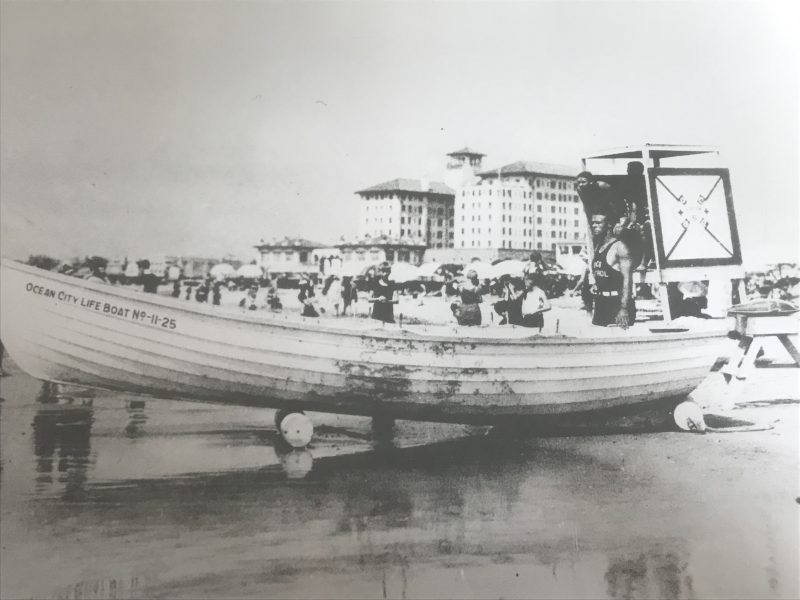
Schuylar Rockey concurs. Rockey, a 10-year OCBP vet who was on the 14th Street beach Friday with partner Carley Rossiter, a second-year member and one of 20 female lifeguards, said he was a fan of the guard stands.
“I like how the seat adjusts,” he said of the plank inside the stand, which slides back and forth for optimal seating comfort.
Rockey also approves of how guards can stow their gear conveniently under the bench and spring into action quickly on a rescue.
Nobody seems to know for sure how much the stands weigh, though. “They’re pretty heavy,” Miller said, “yet not too heavy.”
Rockey and Rossiter work together to keep the stands where they need to be as the beach day moves along.
“The tides in Ocean City move a lot, so we have to move the stands and the boats around,” Rockey said.
Using teamwork and their legs for leverage lifting the stands, it’s no problem, he explained.
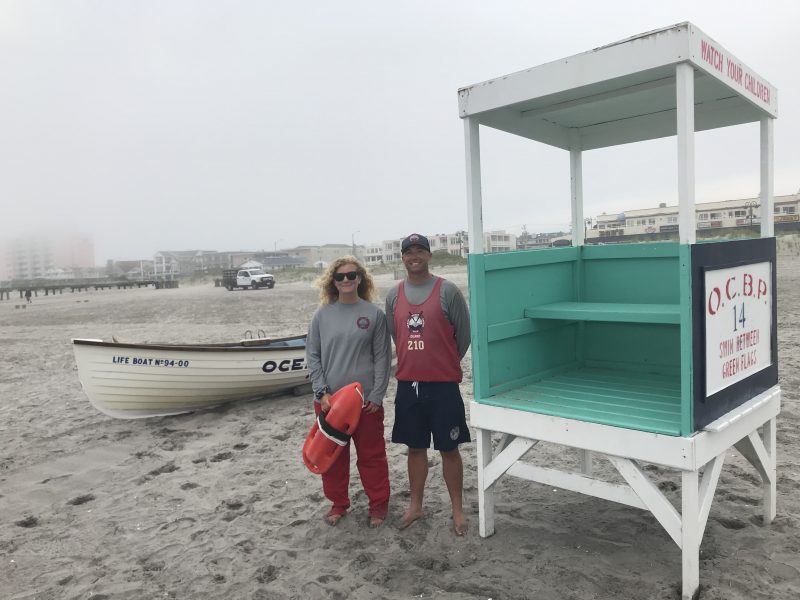
The stands are a purely Ocean City product. Built in the town’s boathouse, where the Beach Patrol lifeboats are also cared for, they are repaired and kept on the beach for many years of service. Although no city employees were available when we visited recently, a row of six stands were awaiting repairs.
Miller wasn’t certain what types of wood were used in the stands’ construction, but he noted that they were built the same way each time.
“They are made using a pattern,” he said. “At any time during the season, there are 40 of them in service.”
We quizzed some random beachgoers, who easily recited the beach rule reminders painted in red on the lifeguard stands: “WATCH YOUR CHILREN” on the back and sides of the roof and “NO BALL PLAYING” and “NO DOGS ON BEACH” stenciled on the back panel.
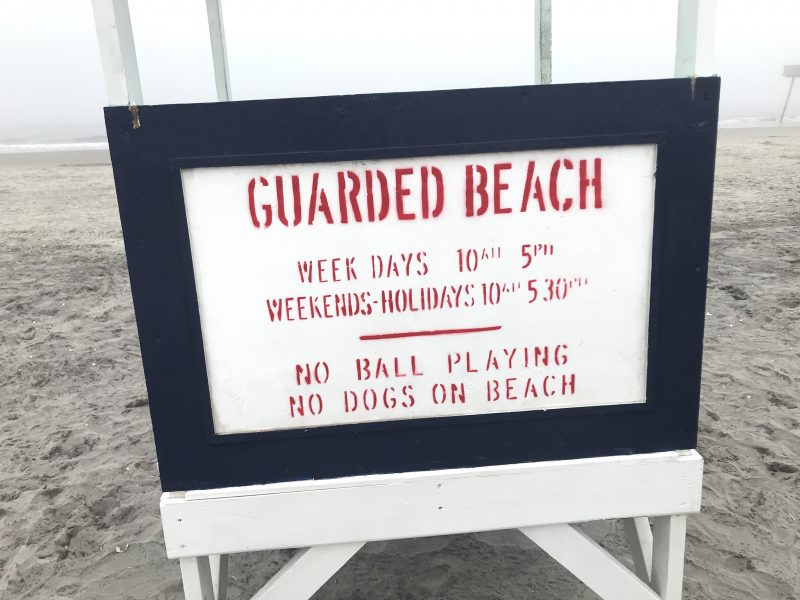
A famous admonition formerly appeared under the side panels: “NO TALKING TO GUARDS,” it said in fancy red lettering. Nobody seems quite sure when those words disappeared, though some say it was in the 1980s.
“That’s one of my pet peeves,” Miller said ruefully. “Years ago, the lettering was beautifully hand-painted by (a professional sign painter).”
He conceded this was one aspect of the OCBP lifeguard stand tradition in which it was sensible for economy to prevail over aesthetics.
“Most people don’t remember when they were painted like that, and our stands are still the nicest looking and most useful to the guards of any around here,” he said. “They still look great.”
And what of the disappearance of the “No talking to guards” rule?
“That was really more of a suggestion and a reminder to the guards to cut the flirting down to a minimum,” Miller said, chuckling.
